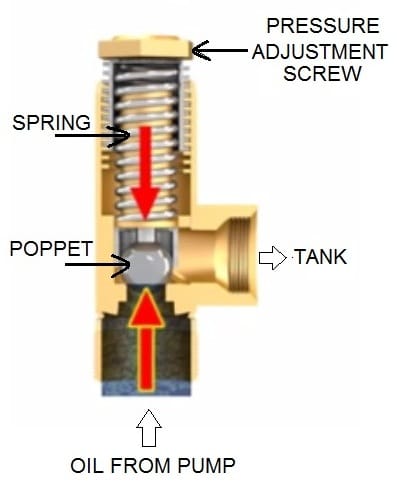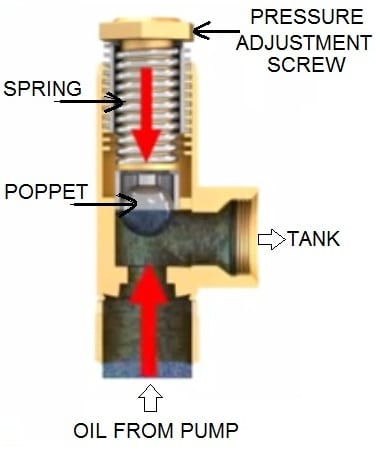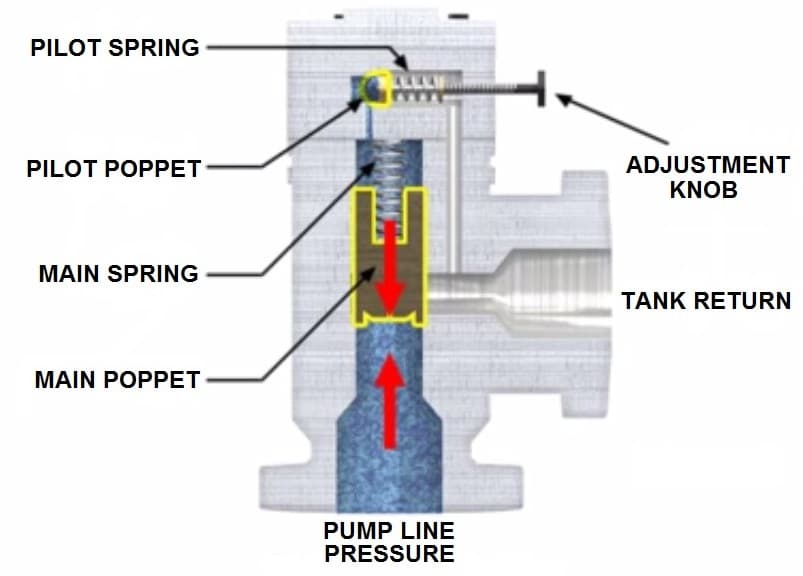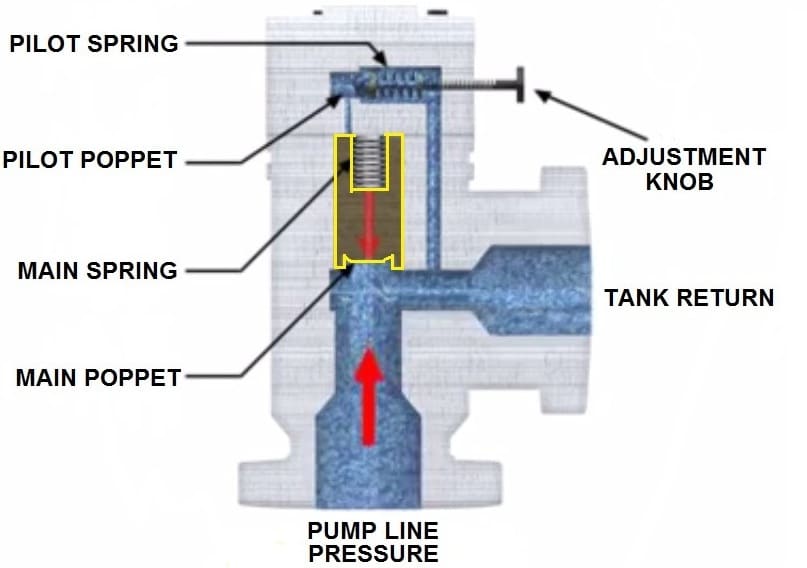Pressure relief valve is one of the most important types of safety valve used in hydraulic system for controlling the rise of pressure within a hydraulic line. In normal condition valve is closed but if the pressure in hydraulic line exceed the design pressure limit, then valve opens to relieve the pressure.
Without a relief valve, pressure can continue to grow until hydraulic component fail and pressure is release.
One port of pressure relief valve is connected with pump delivery line or pressure line and other port is connected with hydraulic reservoir.
Types Of Pressure Relief Valve
- Direct Acting Pressure Relief Valve – It consist of poppet, spring, adjustment knob
- Pilot Operated Pressure Relief Valve – It consist of main poppet, main spring, pilot poppet, pilot spring & adjustment knob.
Direct Acting Pressure Relief Valve Working Principle
Direct acting pressure relief valve are normally closed by direct force created by mechanical spring which was adjusted with the help of pressure adjusting screw. The spring force holding the valve closed is opposed by system hydraulic pressure.


Pilot Operated Pressure Relief Valve Working Principle
Pilot operated pressure relief valve will have one small pilot poppet type of relief valve normally closed by force created by pilot spring and one main poppet relief valve which are also normally closed by force created by main spring. The pilot spring was adjusted with the help of pressure adjusting screw.

If pump line pressure is less than the pressure created by pilot spring, in that situation pilot poppet will be remain seated over its seat. Since the pilot poppet is closed, the pressure in main spring is same as the pump line pressure. Due to balanced pressure the main poppet remains in closed position and will not allow the flow of fluid through it.

Note:
- The pressure at which valve first permit the flow through it is called as cracking pressure
- The pressure at which valve allows to flow the full rated capacity is called as valve full flow pressure.
RELATED SEARCHES:
Introduction of hydraulic system
